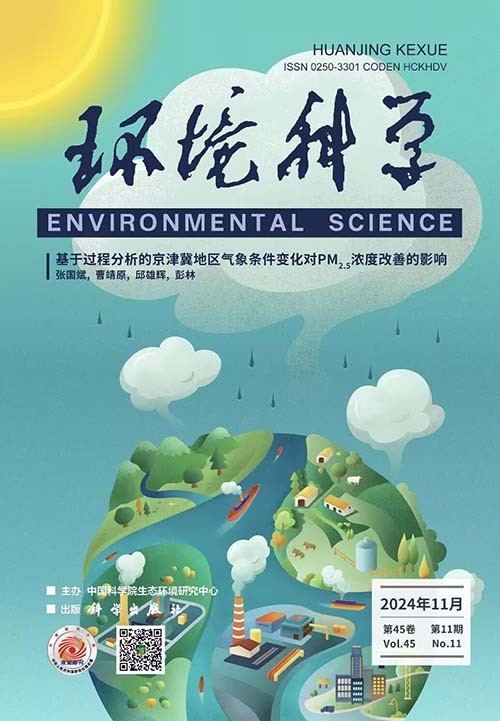基于生态系统服务束的生态功能区演化权衡与协同关系——以吐哈地区为例[j]。
摘要
明确吐哈地区生态功能区的空间分布和组成结构,了解多种生态系统服务功能的权衡与协同演化规律,对吐哈地区生态系统的科学管理和恢复具有重要意义。本研究的目的是探讨各生态系统服务包(ESB)权衡/协同效应的驱动力,并根据生态特征制定差异化的生态管理策略。对吐哈地区6项生态系统服务功能(碳储量(CS)、水量(WY)、土壤保持性(SR)、生境质量(HQ)、粮食产量(FP)和景观审美提供(ALP))进行了定量分析。在此基础上,通过计算多生态系统服务景观指数(MESLI),量化了不同区域的多种生态系统服务综合能力。然后,采用SOFM算法对esb进行识别。根据生态结构特征,划分了生态功能区。此外,使用Spearman相关分析分析了每个ESB中ESs之间的权衡/协同作用。结果表明:①2000 - 2020年吐哈地区建设用地面积增幅最大,达87.10%,其次是耕地(13.47%),草地和未利用地面积持续减少;②从时间分布上看,2000 - 2020年吐哈地区FP均值先增大后减小,ALP先减小后增大,WY呈增大趋势,HQ和SR呈逐渐增大趋势,CS均值无显著变化。从空间分布上看,天山地区WY、HQ、SR、ALP、CS高值区均呈连续分布格局。FP高值区主要分布在山地前平原绿洲的农田。③吐哈地区MESLI均值为0.49,表明该区整体上提供多种生态系统服务的能力较弱,生态系统结构的完整性较低。MESLI总体空间分布表现为中西部高、南部低,空间分异明显。该区域以低mesi值为主,占总面积的79.46%。④通过聚类分析,将该区划分为生态保护区(ECB)、生态保护区(EPB)、粮食生产区(FPB)和生态脆弱区(EFB) 4个生态脆弱区。欧洲央行(ECB)占10.55%,其提供多种生态系统服务的能力最强(MESLI=1.88)。EPB最小,占区域总面积的2.02%。FPB占总面积的8.07%。植被覆盖面积占总面积的79.36%,提供多种生态系统服务的能力最弱(MESLI=0.2)。⑤吐哈地区整体协同关系大于权衡关系。不同服务包中的相同服务组合在权衡/协同方面有相似之处,也有不同之处。研究结果可为吐哈地区的可持续发展和生态环境优化提供科学依据。Clarifying the spatial distribution and compositional structure of the ecological functional zone and understanding the evolution of the trade-offs and synergies among multiple ecosystem services (ESs) are essential for scientific management and restoration of Turpan-Hami Region ecosystems. The objective of this study was to explore the driving forces of the trade-offs/synergies for each ecosystem service bundle (ESB) and to develop differentiated ecological management strategies based on the ecological characteristics. Six ecosystem services (carbon storage (CS), water yield (WY), soil retention (SR), habitat quality (HQ), food production (FP), and aesthetic landscape provision (ALP)), were quantified in the Turpan-Hami Region. Based on this, the comprehensive ability of multiple ecosystem services in different regions was quantified by calculating the multiple ecosystem services landscape index (MESLI). Then, the SOFM algorithm was used to identify the ESBs. According to the ecological structural characteristics of the ESBs, the ecological functional zones were divided. Furthermore, the trade-offs/synergies among the ESs in each ESB were analyzed using Spearman correlation analysis. The results showed that: ① The area of construction land in the Turpan-Hami Region increased the most from 2000 to 2020 at 87.10%, followed by cultivated land (13.47%), and the area of grassland and unutilized land continued to decrease. ② In terms of temporal distribution, the mean value of FP in the Turpan-Hami Region increased and then decreased, the ALP decreased and then increased, WY showed an increasing trend, HQ and SR showed a gradual increasing trend, and no significant change was observed in the mean value of CS from 2000 to 2020. In terms of spatial distribution, the high value areas of WY, HQ, SR, ALP, and CS were all distributed in a contiguous pattern in the Tianshan Mountains Region. The high value areas of FP were mainly distributed in the croplands in the oases of the pre-mountain plains. ③ The mean value of MESLI in the Turpan-Hami Region was 0.49, indicating that the region as a whole had a weak capacity to provide multiple ecosystem services, and the integrity of the ecosystem structure was low. The overall spatial distribution of MESLI showed high in the center and west and low in the south, with obvious spatial differentiation. The area was dominated by low MESLI values, accounting for 79.46% of the total area. ④ The area was divided into four ESBs based on the clustering analysis: ecological conservation bundle (ECB), ecological protection bundle (EPB), food production bundle (FPB), and ecologically fragile bundle (EFB). The ECB accounted for 10.55%, which had the strongest ability to provide multiple ecosystem services (MESLI=1.88). EPB was the smallest, accounting for 2.02% of the total area of the region. FPB accounted for 8.07% of the total area. EFB accounted for 79.36% of the total area of the region, and it had the weakest ability to provide multiple ecosystem services (MESLI=0.2). ⑤ There were more synergistic relationships than trade-offs in the Turpan-Hami Region across the whole region. There were similarities and differences in trade-offs/synergies for the same combination of services in different service bundles. The research results can provide scientific basis for the sustainable development and ecological environment optimization in the Turpan-Hami Region.

 求助内容:
求助内容: 应助结果提醒方式:
应助结果提醒方式:


